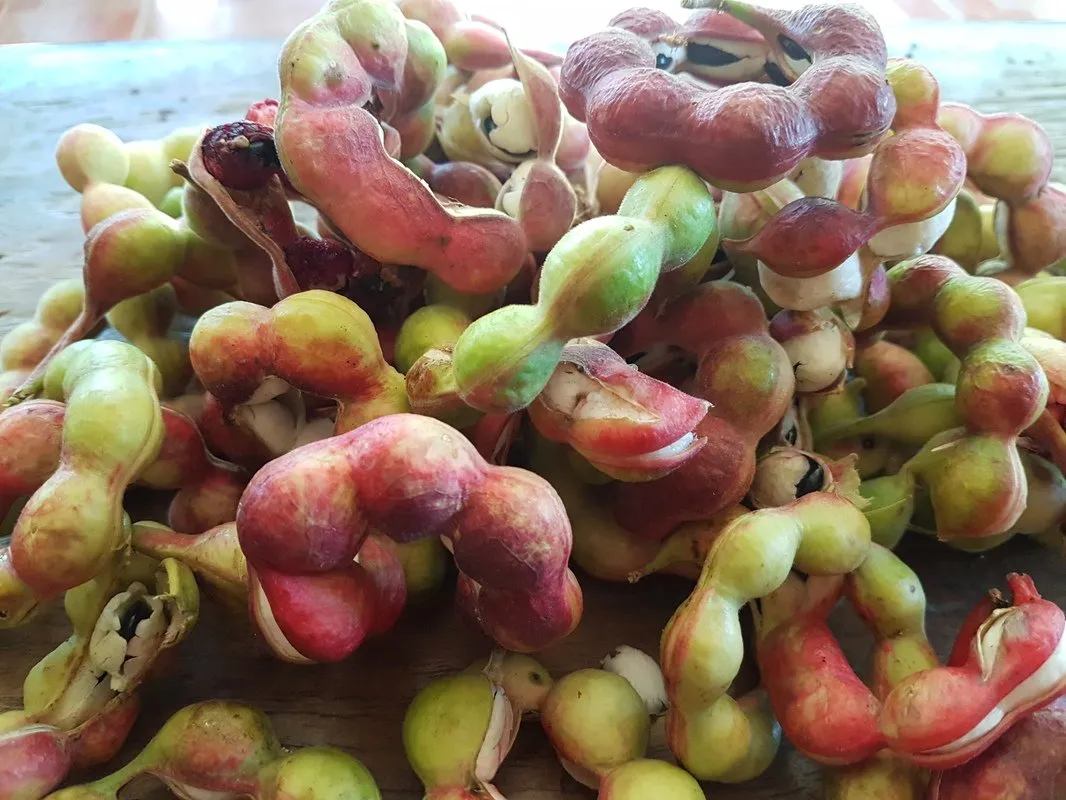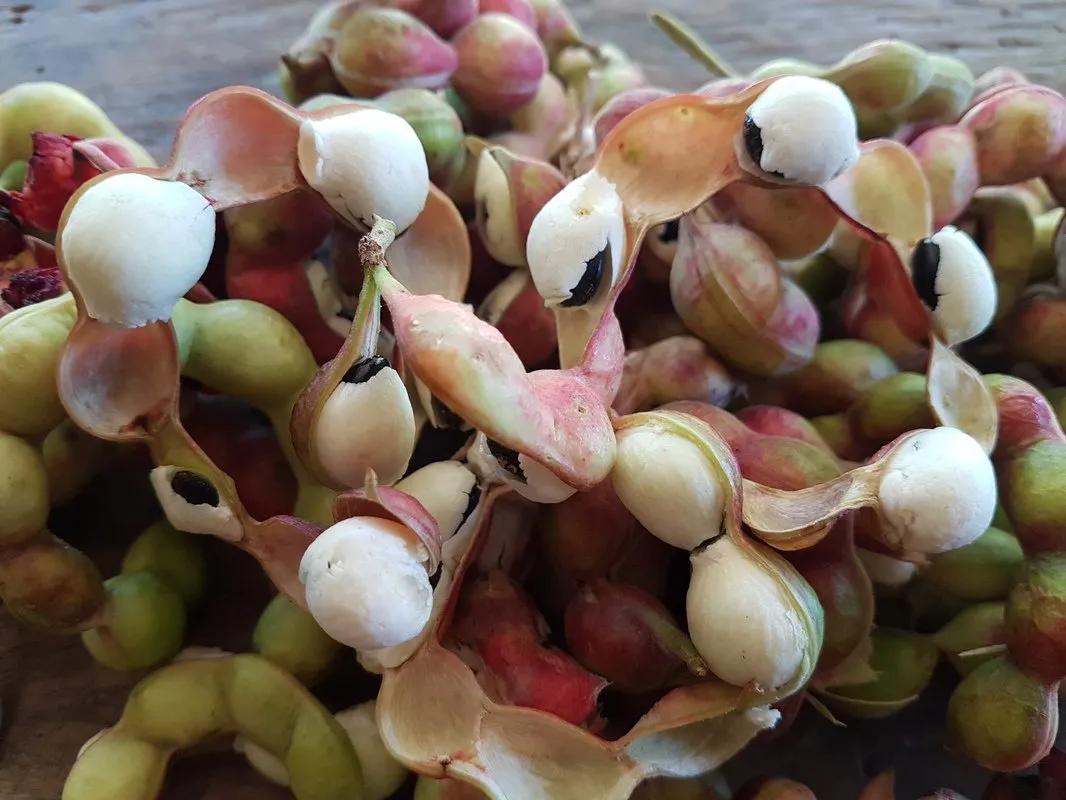
This is one fruit that's very common in the Northern Philippines, once it is in season. They probably be found elsewhere in the country but i haven't seen it being sold in Manila. Its' trees can be found along the road, the river, farms and fish ponds, but it's rare to find them in one's backyard.
This because of its' thorny branches and trunks. A tree can also grow wide that it takes a lot of space. Plus its' branches can't intertwine with other tree branches causing harm to any climber because of its' thorns.
Here is the myth of the camachile tree: http://www.philippinesinsider.com/myths-folklore-superstition/the-myth-on-the-camachile-tree/
I don't know exactly how the above happened but anyway, i hope it's not that much of a nuisance.

The fruits are shaped like tamarinds but they have different consistency on the shells, they can be peeled exposing its' seeds. The seeds can be white, red or purple in color, and these are what we eat.
Always, always taste a piece before buying
In the market, it is ok to taste them as some varieties aren't sweet. Even the vendors encouraged this practice to not disappoint the customers.
I saw one vendor selling earlier in the market, as i was looking for these since arrival in the Philippines a few days back. She was telling me that they were sweet but not to my own taste so i didn't buy any. A good thing as my sister-in-law bought 3 small bags brought to our house to be sold by a neighbour. A $1 a piece isn't bad!!
A seed within a seed?

Although they are called SEEDS already, they still have inner black seeds. These taste horrible so be mindful. After eating, jut like any seed, they can be thrown in the backyard to re-grow.
We had a camachile tree before, but it was cut down due to it becoming unproductive for a few years. We waited but there's no fruit.
All images are mine and are original, taken with my Samsung Galaxy S7.
